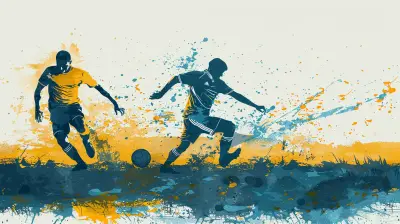How to Recover Quickly After a Challenging Surf Session
4 June 2025
Surfing is an exhilarating sport, blending athleticism, balance, and a deep connection with the ocean. But let’s be honest—after a tough session, your body feels wrecked. Your arms feel like jelly, your back is tight, and your legs are burning. So, how do you bounce back quickly and get ready for your next wave-riding adventure?
If you don’t prioritize recovery, fatigue builds up, injuries become more likely, and your performance in the water suffers. Luckily, with the right strategies, you can speed up recovery and get back to paddling out faster than ever. In this guide, we’ll cover everything you need to know about post-surf recovery—from hydration to stretching to nutrition.

1. Rehydrate Immediately
Surfing drains your energy, and whether you realize it or not, it also dehydrates you. Spending hours in the salty ocean means your body loses fluids through sweat (even if you're in the water). That dehydration can leave you feeling sluggish and sore.Why Hydration Matters
- Helps flush toxins from your muscles- Prevents cramps and stiffness
- Speeds up muscle repair
Best Ways to Rehydrate
- Water: The simplest and most effective choice.- Coconut Water: Packed with electrolytes, it replenishes lost minerals.
- Electrolyte Drinks: Perfect for replacing sodium and potassium after an intense session.
- Smoothies: Blend in bananas, berries, and spinach for an extra nutrient boost.

2. Refuel with the Right Foods
After a grueling surf session, your body craves nutrients to rebuild muscle, restore glycogen levels, and reduce inflammation.What to Eat After Surfing
- Protein: Helps repair damaged muscle fibers. Opt for eggs, chicken, fish, or a protein shake.- Healthy Fats: Reduce inflammation and keep joints healthy. Include avocados, nuts, and olive oil.
- Complex Carbs: Replenish energy stores. Go for sweet potatoes, brown rice, or quinoa.
- Anti-Inflammatory Foods: Turmeric, ginger, and leafy greens help reduce muscle soreness.
Pro tip: Avoid processed foods and sugary snacks. They spike your energy for a moment but leave you crashing hard later.

3. Stretch and Mobilize
Surfing tightens up your muscles, especially in your shoulders, lower back, and hips. Ignoring post-surf stretching increases your risk of injury and stiffness.Best Stretches for Surfers
- Downward Dog: Great for stretching the shoulders, hamstrings, and calves.- Hip Openers: Moves like the butterfly stretch target tight hips.
- Child’s Pose: Relaxes the lower back and improves flexibility.
- Thoracic Twists: Helps loosen up a stiff back after paddling.
Doing a 10-15 minute stretching routine after your session will keep your body loose and ready for the next surf.

4. Take a Cold Water Dip or Ice Bath
Ever noticed how many pro surfers swear by cold water recovery? There’s a reason for that. Cold exposure helps reduce inflammation, soothe sore muscles, and speed up recovery time.How to Use Cold Therapy After Surfing
- Jump Back in the Ocean: A quick dip in the cool water post-surf can help reduce muscle fatigue.- Cold Shower: If you're at home, a cold shower can do wonders for your recovery.
- Ice Bath: If you've had a particularly tough session, an ice bath (10-15 minutes) can dramatically lower soreness.
If you're not used to ice baths, start slow—gradually build up your tolerance rather than diving in all at once.
5. Get Enough Rest and Quality Sleep
Your body does most of its recovery while you sleep. If you’re not getting at least 7-9 hours of quality rest, you’re slowing down your recovery process.Tips for Better Sleep
- Avoid screens an hour before bed (blue light messes with melatonin).- Stick to a consistent sleep schedule.
- Use blackout curtains and keep your room cool.
- Avoid caffeine in the evening.
Need extra help with muscle recovery? Magnesium supplements can improve sleep quality and reduce muscle cramps.
6. Self-Massage or Foam Rolling
Your muscles go through a beating after a long surf session, especially your shoulders and lower back. Using a foam roller or massage ball can relieve tension and boost blood flow to speed up recovery.Foam Rolling Routine for Surfers
- Upper Back Roll: Loosen up tight paddling muscles.- Lats & Shoulders: Targets overworked paddle muscles.
- Hip Flexor Release: Keeps your lower body mobile.
- Calves & Hamstrings: Helps reduce leg cramps.
If foam rolling feels too intense, a deep tissue massage from a professional can work wonders.
7. Breathe and Relax
Surfing is physically intense, but it also takes a mental toll. After pushing your limits in the water, taking a moment to control your breath and relax helps reset your nervous system.Best Breathing Techniques for Recovery
- Box Breathing (4-4-4-4): Breathe in for 4 seconds, hold for 4, exhale for 4, hold for 4. Repeat.- Diaphragmatic Breathing: Breathe deep into your belly, not just your chest.
- Wim Hof Method: A series of controlled hyperventilations followed by breath holds—great for oxygenating muscles.
Combine breathwork with meditation to calm your mind and keep stress levels low.
8. Listen to Your Body and Avoid Overtraining
Surfing is addictive, no doubt. But if you’re constantly pushing without rest, your body will eventually break down. Overtraining leads to burnout, decreased performance, and potential injuries.Signs You Need More Recovery
- Constant fatigue- Decreased performance in the water
- Frequent colds or injuries
- Unmotivated or sluggish feeling
If you notice these signs, take a break. Your body needs time to heal before you hit the next big swell.
Final Thoughts
Recovering after a challenging surf session isn’t just about feeling better—it’s about keeping your body in peak condition so you can surf longer, perform better, and avoid injuries.By staying hydrated, fueling your body with the right nutrients, stretching, using cold therapy, getting quality sleep, and listening to your body, you’ll speed up recovery and be ready to charge the next session with full energy.
Next time you’re exhausted after a tough surf, remember: recovery isn’t just a luxury—it’s a necessity if you want to keep ripping for years to come.
all images in this post were generated using AI tools
Category:
SurfingAuthor:

Onyx Frye
Discussion
rate this article
3 comments
Mateo Wilson
Great tips! Recovery is key to enjoying the waves again!
June 16, 2025 at 2:57 AM

Onyx Frye
Thanks! Absolutely, recovery is essential for getting back to those waves stronger than ever!
Zephyrian O'Neal
Embrace the waves, recharge your spirit, and rise stronger for the next ride!
June 7, 2025 at 3:56 AM

Onyx Frye
Absolutely! Embracing the waves is key—take time to recharge and you'll come back even stronger for your next surf session!
Etta Newton
Surfing is a dance with the ocean; sometimes you stumble. Recovery isn’t just about rest—it's hydration, nutrition, and a little mindfulness. Embrace the waves, learn from the wipeouts, and remember: every session is a step closer to conquering the swell!
June 4, 2025 at 12:41 PM

Onyx Frye
Absolutely! Recovery is key to improving your surf skills—hydration, nutrition, and mindfulness make all the difference. Embrace the process!



